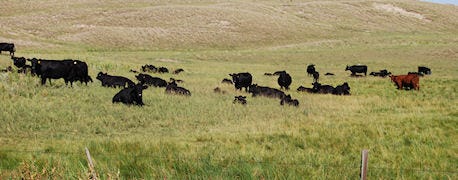August 12, 2014

Weeds have exploded recently in many pastures. Plants like ragweed, ironweed, goldenrod, gumweed, and vervain are abundant everywhere, says Bruce Anderson, University of Nebraska-Lincoln forage specialists.
"Early summer rains stimulated growth of these weeds," Anderson says. "Although this rain also boosted grass production, grazing has removed much of this grass, providing the opportunity needed by these weeds to flourish. Only pastures or areas in pastures with continuously thick, relatively tall grass stands have few weeds."

Consider Options to Control Late Summer Pasture Weeds
Spraying many weeds now does little good, he says. Most weeds are too large to kill so herbicides might only reduce some seed production and may make pastures a bit more attractive. "Shredding might actually work better to reduce weed seeds if it's not already too late," he adds.
Two other approaches are more important for long-term weed control. First, do more rotational grazing next year to improve the health, vigor, and density of your grass, recommends. And as you rotate, leave more residue behind when moving animals to a new pasture. This helps maintain higher competition. Healthy, competitive grass stands are essential to reduce weed populations economically.
Second, use herbicides when they will do the most good, Anderson explains. "Early June usually is most effective time, especially with herbicides like Grazon, Forefront, Chaparral, Curtail, 2,4-D and dicamba," he says. "Most perennial weeds, and many annuals, are sensitive to chemicals in June. Weed control, along with good grazing, will thicken your grass stands so herbicides won't be needed as often in the future."
You May Also Like




